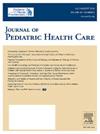Exploring Condom Intentions and Sexual Risk Behaviors Among Urban Black Emerging Adult Males: The Role of Nurse Practitioners
IF 1.8
4区 医学
Q2 HEALTH POLICY & SERVICES
引用次数: 0
Abstract
Category/Date
Clinical Research Podium Presentations: NAPNAP Research Agenda Priorities: Mental Health, Pediatric Workforce and Infectious Disease Prevention. Presented at NAPNAP’s 46th National Conference on Pediatric Health Care, March 11, 2025.
Background & Significance
Sexually transmitted infections (STIs) disproportionately impact young Black emerging adult men (BEAMs) in the United States, showcasing high STI rates and risky sexual behavior. Understanding the factors influencing condom use intentions among BEAMs is crucial in developing effective sexual health interventions.
Purpose/Aims
This analysis focuses on identifying risk factors that influence condom use intentions among Black emerging adult males (BEAMs) in urban settings and investigates the challenges BEAMs face in making condom use decisions during the critical developmental stage of 18 to 24 years of age. This age group is of particular significance due to its association with key transitional factors, including the shift from pediatric to adult care, low rates of health insurance coverage, and growing independence. Despite the importance of this stage, there is a notable lack of targeted health agendas addressing the sexual and reproductive health needs of young men. By analyzing existing best practices and identifying areas for improvement, this research aims to inform more effective, tailored strategies and clinical discussion to support the sexual and reproductive health of BEAMs in urban communities such as Detroit.
Methods
Findings were reported from the Philadelphia Barbershop Study - Shape Up! Barbers Build Better Brothers, an HIV risk reduction intervention, a cross-sectional data set. Risk factors were examined impacting intentions to use condoms among Black emerging adult males ages 18-24 (N=618) in urban settings. The study analyzes factors including demographics, past sexual history, hypermasculinity, manhood stress, and Black manhood vulnerability to understand behaviors promoting condom use intentions within this demographic.
Results
The regression analysis revealed that higher subjective norm (β = 0.16, p <.001), descriptive norm (β = 0.08, p <.01), attitudes about using condoms (β = 0.30, p <.001), self-efficacy (confidence) (β = 0.41, p <.001), and hypermasculinity (e.g. protecting one’s manhood) (β = 0.06, p <.01) were associated with greater condom use intention.
Discussion & Conclusions
The findings are crucial for addressing public health efforts to prevent the spread of HIV and STIs. It is important to understand the intentions and motivations related to condom use at the time of sexual activity, especially among Black emerging adult males, to promote positive sexual reproductive health and reduce risk behaviors. Advanced Practice Registered Nurses, particularly nurse practitioners specializing in pediatric, ER, and adolescent health, play a vital role in testing, treatment, and providing anticipatory guidance on increased condom use, consistent condom usage over time, and protective factors that impact adolescent and emerging adult populations.
探索避孕套的意图和性风险行为在城市黑人新兴成年男性:护士从业人员的作用
类别/日期临床研究讲台演讲:NAPNAP研究议程优先事项:心理健康,儿科劳动力和传染病预防。于2025年3月11日在NAPNAP第46届全国儿科保健会议上发表。背景与意义性传播感染(STI)对美国年轻黑人成年男子(beam)的影响不成比例,显示出高STI发病率和危险性行为。了解影响跨性别人群使用安全套意愿的因素对于制定有效的性健康干预措施至关重要。目的/目的本分析的重点是确定影响城市环境中黑人新兴成年男性(BEAMs)使用安全套意愿的风险因素,并调查在18至24岁的关键发育阶段,beam在做出安全套使用决策时面临的挑战。这一年龄组具有特别重要的意义,因为它与关键的过渡因素有关,包括从儿科向成人护理的转变、低医疗保险覆盖率和日益独立。尽管这一阶段很重要,但明显缺乏针对青年男子性健康和生殖健康需要的有针对性的保健议程。通过分析现有的最佳做法和确定需要改进的领域,本研究旨在为更有效、更有针对性的战略和临床讨论提供信息,以支持底特律等城市社区beam的性健康和生殖健康。方法研究结果来自费城理发店研究——Shape Up!理发师打造更好的兄弟,一个减少艾滋病毒风险的干预,一个横断面数据集。研究了影响城市18-24岁黑人新成年男性(N=618)使用安全套意愿的风险因素。该研究分析了人口统计学、过去的性史、超级男性化、男性压力和黑人男性脆弱性等因素,以了解在这一人口统计学中促进安全套使用意图的行为。ResultsThe回归分析显示,高主观规范(β = 0.16,p & lt;措施),描述性规范(β = 0.08,p & lt; . 01),对使用安全套的态度(β = 0.30,p & lt;措施),自我效能感(自信)(β = 0.41,p & lt;措施),和hypermasculinity(如保护一个人的男子气概)(β = 0.06,p & lt; . 01)与更大的避孕套的使用意图有关。讨论&结论这些发现对于解决公共卫生工作以防止艾滋病毒和性传播感染的传播至关重要。重要的是要了解在性活动时使用避孕套的意图和动机,特别是在黑人新成年男子中,以促进积极的性健康和生殖健康并减少危险行为。高级执业注册护士,特别是专门从事儿科、急诊室和青少年健康的执业护士,在检测、治疗方面发挥着至关重要的作用,并在增加避孕套使用、长期一致使用避孕套以及影响青少年和新成年人群的保护因素方面提供预期指导。
本文章由计算机程序翻译,如有差异,请以英文原文为准。
求助全文
约1分钟内获得全文
求助全文
来源期刊

Journal of Pediatric Health Care
NURSING-PEDIATRICS
CiteScore
3.40
自引率
10.70%
发文量
140
审稿时长
24 days
期刊介绍:
The Journal of Pediatric Health Care, the official journal of the National Association of Pediatric Nurse Practitioners, provides scholarly clinical information and research regarding primary, acute and specialty health care for children of newborn age through young adulthood within a family-centered context. The Journal disseminates multidisciplinary perspectives on evidence-based practice and emerging policy, advocacy and educational issues that are of importance to all healthcare professionals caring for children and their families.
 求助内容:
求助内容: 应助结果提醒方式:
应助结果提醒方式:


